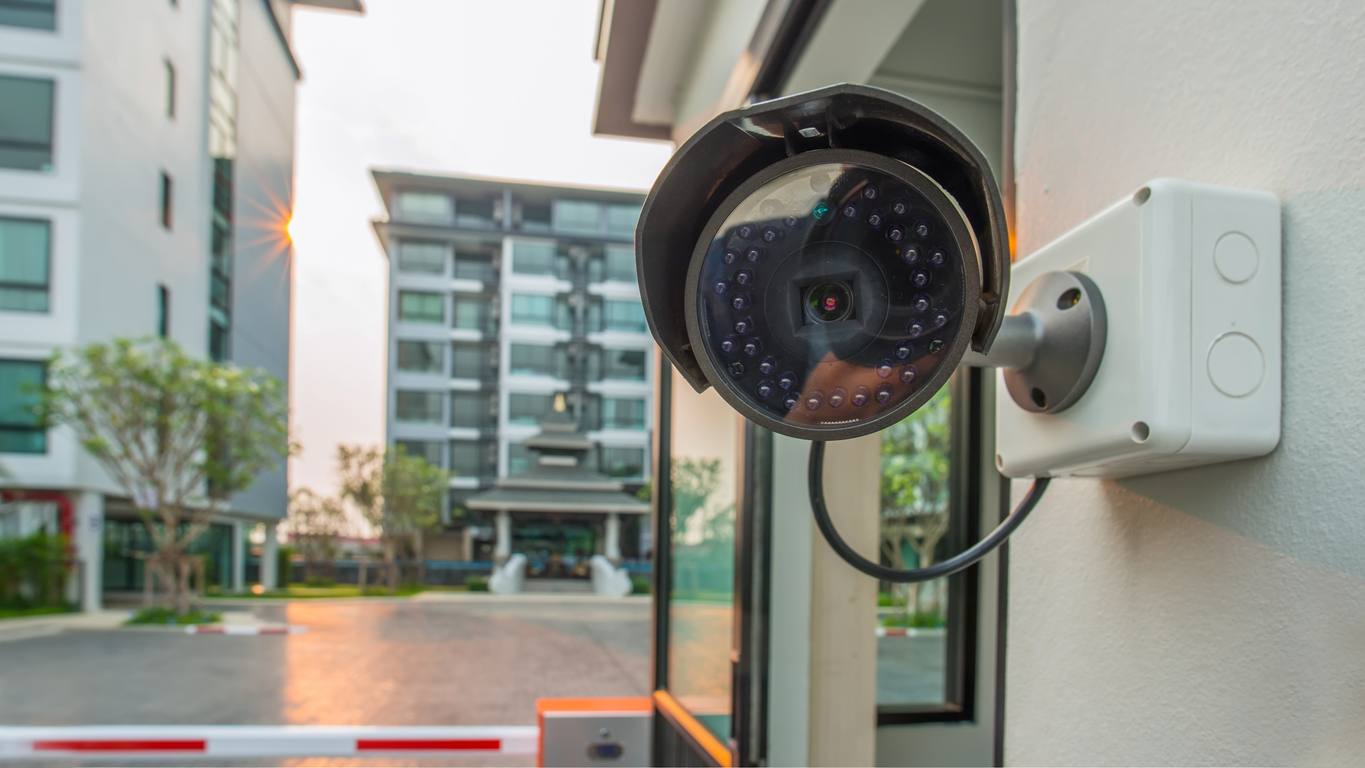What is video surveillance? A beginner’s guide
Video surveillance has evolved far beyond simple security cameras. Now they are complex systems with a wide variety of functions that solve a number of tasks besides security. In this guide, we’ll explain how modern systems work, their benefits, and how to choose the right solution – whether you’re protecting a home in Berlin, a retail store in New York, or a factory in Singapore.

Definition: Video surveillance is a system of cameras, recording devices, and software that monitor activity in specific areas. It involves capturing live footage that can be viewed in real-time or recorded for later review.
Video surveillance is often called CCTV which stands for Closed Circuit Television. This term originates from the time when the video signal couldn’t be shared or transmitted outside of the cabled infrastructure – that’s why it was the “closed circuit”.
Today we still have such “closed” systems, however, mostly data can be shared and transmitted. Therefore, now there’s a new term – Video Surveillance Systems (VSS).
Key components of VSS:
- cameras (IP, analog, etc.). Different types of cameras provide various features and functions.
- storage (NVRs, local, or cloud servers). It keeps the captured footage.
- monitors. Allows watching real-time view of camera stream or archive of recordings.
- software. Programs like Xeoma allow intelligent analytics and other options for convenient video surveillance.
- network infrastructure. It provides transmitting and accessing footage.
How it works:
A video surveillance system has a coordinated workflow.
- Capturing. Cameras record footage and transmit it via wired/wireless networks (Ethernet, Wi-Fi, etc.).
- Processing. Software like Xeoma analyzes the stream in real-time using different modules (motion detection, face recognition, smoke detection, etc.).
- Storing. Footage is saved to local drives or cloud servers.
- Alerts and actions. The system triggers responses based on rules the user set in video surveillance software: sending mobile/email notifications, activating alarm, etc.
To choose and install a video surveillance system that is right for you, you need to answer a few questions. The answers will tell you how large your VSS must be and what functions you need.
1) What are you watching?
Determining the aim of surveillance is important for understanding how large VSS should be.
- Events. From any motion to fire break-out, the right surveillance software will help you detect exactly what is important for you.
- Visitors. You may want to count how many people come to your place during a particular period or define how many adults are among them. Modern AI functions can help with any request. Xeoma has more than 30 smart video analytics modules.
- Employees. In case you intend to monitor your employees’ work remotely or want to know who entered or exited the building and when.
- Assets. Some items may be quite expensive or simply appealing for criminals, for example, cash registers.
2) How are you watching?
This question might influence the number and type of cameras you’ll need for your VSS.
- Indoor. Typically, workspaces are well-lit, but sometimes in small spaces like homes or offices there may be poorly lit areas. In such cases, to obtain high-quality recordings, you should either improve the lighting or use cameras with wide apertures.
- Outdoor. Depending on the required scope of monitoring, you may need cameras with wide range of sight and high resolution to cover large distances and get a great level of detail in footage at the same time. If your region is famous for severe climate, you’d better look for brands producing cameras with good resistance to harsh weather conditions.
- Mobile. Video surveillance systems for vehicles, mobile installations, and other movable objects typically don’t require many cameras, but they should be easily assembled and dismantled.

3) Why are you watching?
Modern video surveillance serves far more purposes than just security. Defining your goals will help determine what features in surveillance software are essential for you.
- Remote monitoring. Be aware of what’s happening at any time any place.
- Crime prevention and evidence. Detect theft cases, identify intruders in restricted areas, provide evidence of incidents, and discover abandoned objects.
- Improved safety. Modern AI functions make it possible to monitor hazards and provide safe environment. It’s a crucial function in video surveillance for both home and industrial usage like construction sites.
- Data analysis. Surveillance software like Xeoma gathers information necessary exactly for your project development: customers count, tracking peak hours, monitoring production lines for operational efficiency.
- Specialized applications. From wildlife monitoring for tracking endangered species to traffic management for detection of speed limit violations – state-of-the-art software can fulfill any request.
Thus, before buying hardware and software, determine what you need: how big your system should be, which cameras will cope with the tasks, which functions will be useful to you and which will not. Whether you require basic motion detection or advanced AI analytics, the ideal system should be flexible, scalable, and easy to manage.
That’s where Xeoma comes in – a professional yet adaptable software that meets any requirement, from small office setups to large industrial projects.
Xeoma is a professional solution for video surveillance systems of any complexity and scale. It works equally effectively for monitoring small private homes as well as for securing giant factories with hundreds of employees and facilities.
So why Xeoma?
- Works with most of camera types and brands. You don’t need to buy anything specific for Xeoma.
- Supports all popular OS.
- Scalable from single homes to city-wide deployment.
- Convenient for worldwide work. Xeoma is translated into 78 languages, so its usage will be comfortable for you.
- More than 100 features for any goals, from basic motion detection to emotion recognition.
Video surveillance has become an indispensable tool for security, safety, and operational efficiency in today’s world. Modern systems, powered by AI and smart analytics, go far beyond simple recording – they help prevent incidents, optimize workflows, and even save lives.
With Xeoma, you get a versatile, user-friendly, and powerful video surveillance solution that grows with your needs. Whether you’re securing a cozy home or managing a multi-site enterprise, Xeoma provides the right features without unnecessary complexity.
Interested? Try Xeoma for free now.
Ready to start? Choose a license.
July 29, 2025
Read also:
CCTV Trends in 2025: how Xeoma is already implementing the future
How to use video surveillance for market research tasks
Getting started, or how to use Xeoma as efficiently as possible
Using the free version of Xeoma for a small video surveillance system
Wildlife Video Surveillance with Smart Security Software Xeoma